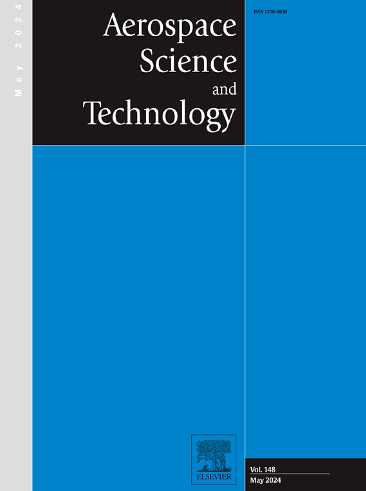Dynamic response reconstruction for variable-mode aerospace structures
IF 5
1区 工程技术
Q1 ENGINEERING, AEROSPACE
引用次数: 0
Abstract
Due to continuous changes in dynamic parameters and modal characteristics of spatial structures caused by spatial environment effects, the reconstruction and prediction of structural responses based on a time-invariant model are rendered challenging. To enable accurate reconstruction of responses of on-orbit engineering targets using continuously updated dynamic models, a dynamic response reconstruction method is introduced in this paper, which integrates the Finite Element Model (FEM) with Long Short-Term Memory (LSTM) neural networks. The parameters requiring updates are determined through adjoint sensitivity analysis. A neural network is utilized to establish a mapping between structural responses and parameters subject to updates. Frequency modulation is employed for effective mode separation during signal processing. The dynamic response reconstruction is conducted within the framework of the modal superposition method. A spatial truss and a planar antenna are selected as subjects for numerical analysis, and the outcomes are compared with those obtained from the traditional response reconstruction method. Ultimately, ground testing and verification using motion capture systems validate that improved reconstruction accuracy is provided for variable-mode aerospace structures by the proposed method.
变模态航空航天结构的动力响应重构
由于空间环境效应导致空间结构的动力参数和模态特征不断变化,基于时不变模型的结构响应重建和预测具有挑战性。为了利用不断更新的动态模型准确重建在轨工程目标的响应,提出了一种将有限元模型与长短期记忆神经网络相结合的动态响应重建方法。通过伴随灵敏度分析确定需要更新的参数。利用神经网络建立结构响应与更新参数之间的映射关系。在信号处理过程中,采用调频技术进行有效的模式分离。在模态叠加法的框架内进行动力响应重构。选取空间桁架和平面天线作为数值分析对象,并与传统的响应重构方法进行了比较。最后,使用运动捕捉系统进行的地面测试和验证验证了所提出的方法为变模航空航天结构提供了更高的重建精度。
本文章由计算机程序翻译,如有差异,请以英文原文为准。
求助全文
约1分钟内获得全文
求助全文
来源期刊

Aerospace Science and Technology
工程技术-工程:宇航
CiteScore
10.30
自引率
28.60%
发文量
654
审稿时长
54 days
期刊介绍:
Aerospace Science and Technology publishes articles of outstanding scientific quality. Each article is reviewed by two referees. The journal welcomes papers from a wide range of countries. This journal publishes original papers, review articles and short communications related to all fields of aerospace research, fundamental and applied, potential applications of which are clearly related to:
• The design and the manufacture of aircraft, helicopters, missiles, launchers and satellites
• The control of their environment
• The study of various systems they are involved in, as supports or as targets.
Authors are invited to submit papers on new advances in the following topics to aerospace applications:
• Fluid dynamics
• Energetics and propulsion
• Materials and structures
• Flight mechanics
• Navigation, guidance and control
• Acoustics
• Optics
• Electromagnetism and radar
• Signal and image processing
• Information processing
• Data fusion
• Decision aid
• Human behaviour
• Robotics and intelligent systems
• Complex system engineering.
Etc.
 求助内容:
求助内容: 应助结果提醒方式:
应助结果提醒方式:


